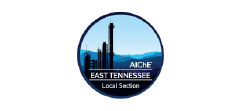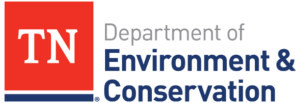Bartec Is
Partnering
at the Expo
To Reflect Partnering
in the Field
Four companies are joining forces to create an Enterprise Mobility Showcase on the exhibit floor of eChem Expo, demonstrating that the whole can indeed be bigger than the sum of its parts. The four entities, BARTEC – Index AR, eVision and Hardhat Connect – offer hardware and software products that can combine to facilitate wireless communications in process-industries plants.
The messages of the four companies should resonate with Expo attendees, the exhibitors say. Many members of the process industries consider enterprise mobility a key element of the Internet of Things, or IoT, which is ushering in a connected world of devices that communicate with each other and with humans. The manufacturing side of that new world, often referred to as Industry 4.0, represents a fourth industrial revolution. Steam and water powered the first industrial revolution, electricity brought the second, and electronics and IT combined to automate the third.
As more devices connect with each other in Industry 4.0, more companies are connecting with each other to provide infrastructure for the IoT. The Enterprise mobility Showcase, which includes BARTEC and some of its partner companies, embodies that trend. Let’s hear from the companies represented there.
As more devices connect with each other in Industry 4.0, more companies are connecting with each other to provide infrastructure for the IoT.
eVision Industry Software
BARTEC, which offers hardware, invited some of its software partners, including eVision, to participate in eChem Expo. One of them, known as eVision, offers dynamic barrier risk management through its ONE Vision Platform, says Kelly de Zeeuw, the company’s marketing coordinator. Barriers include anything from the state of the plant’s equipment to the amount of education a workforce needs, she says. eVision provides simple visuals that describe the state of each barrier, with the colors red, orange or green indicating the level of safety.
eVision offers an electronic version of P&ID – or piping and instrumentation diagrams – that come with the advantage of being “extremely interactive,” according to Morgan Briden, the company’s partner manager. That way, no one needs to look up the physical P&ID anymore. Having the electronic version ensures that users are working with the latest P&ID, notes de Zeeuw. “It’s like looking for a needle in a haystack, sometimes,” she says of referring to paper PL&IDs, “and we take that out of the equation.”
A digital permit to work from eVision can also replace paper versions, says Briden. The digital approach aids compliance and prevents users from falling victim to the all-too-human tendency to take shortcuts, he maintains. The digital version creates a trail indicating who signed what, he notes. Business rules built into the system can head off problems, de Zeeuw says. The permits are integrated into the company’s other systems, too, she adds.
The company got its start 10 years ago, when the founders looked around and saw that too much work was still scribbled on paper, says de Zeeuw. Within five years of the launch, eVision was landing major companies as clients, she notes. The company maintains offices around the world, including its U.S. headquarters in Houston, Briden says. About 250 employees work for eVision today, up from 30 workers four years ago, deZeeuw notes.
In a shipbuilding project, Index AR Solutions provides an augmented reality app that depicts temporary steel in green and permanent steel in blue. Workers use it to identify the steel that was used as bracing during construction and can be removed when the ship nears completion. Index AR apps can also benefit the process industries, the company says.

Index AR Solutions
Index AR is based in Williamsburg, Va., and grew out of the largest shipyard in the United States, Newport News Shipbuilding. The shipbuilding industry has been using augmented reality, or AR, since 2011, says Scott Sommers, the company’s vice president of client and corporate development. Three founders launched Index AR in 2015 because they realized AR had potential beyond shipbuilding in industries and could benefit the energy and aerospace sectors.
AR captures knowledge transfer, giving workers information they need when they need it, and it promotes best practices throughout the labor force, Sommers notes. It facilitates safety, capital effectiveness and capital enhancement, he says.
The company spends two to three months creating a knowledge transfer app at the enterprise level to augment workers, not necessarily to augment reality, he says. The apps give workers the tools they need to do the job effectively safely and efficiently, he continues. Index AR works closely with senior management, and the apps often wind up in board rooms, but the focus remains on providing tools to workers turning wrenches in the field, he maintains.
Sommers uses the example of a shipbuilding project that centered on temporary-steel inspection and removal. The company found that a worker needed just 90 minutes to complete a task that would have required 36 hours without AR, he says. To help remove the temporary steel used like Legos as bracing during ship construction, the company creates a model that depicts the temporary steel in green and shows the steel that should stay in place in blue. The method helped workers find and remove temporary steel that they sometimes had not seen in conventional drawings. “Those are the types of apps we like to build with people,” he notes. “It’s not uncommon for people to see increased productivity of two to four times.”
In another example, Index AR worked with a Midwest utility that had a challenge with voltage regulators. The company used three different voltage regulators and five controllers, Sommers says. In the past, three or four trucks would roll out of a substation to do the inspections and then the troubleshooting, bug the line people didn’t really have the knowledge to do the latter. So, Index AR worked with the utility to create an app with six or seven hours of content. With the help of that app, only one truck with one person is needed for inspections and troubleshooting, he says. People sign in and out of the app so management can see who’s doing the work and how long it takes.
“We work with the client to find the most effective way to distribute the knowledge transfer,” Sommers continues. That includes surveying workers to finding and standardize best practices, he notes. Standardization promotes safety, and being able to gain access best practices in the field can reduce errors by 90 percent, he maintains. As seasoned professionals retire, best practices will help pass along their knowledge to a new generation of workers and reduce the time needed for apprentice programs.
“If there is enough internet bandwidth to the outside world, remote experts can also connect with onsite workers provided they are securely behind the enterprise firewall.”
Priologic Software
Hardhat Connect
Priologic, a company formed in Canada in 2003, offers a product called Hardhat Connect and is using it to team up with BARTEC US on jobsites and at eChem Expo, according to Osman Amith, BARTEC US sales manager. For BARTEC, it’s a matter of leveraging Priologic’s videoconferencing technology, Amith notes.
Hardhat Connect puts a small local server in a truck or construction office so onsite workers can connect to each other via local wifi, says a Priologic press release. “If there is enough internet bandwidth to the outside world, remote experts can also connect with onsite workers provided they are securely behind the enterprise firewall,” the release says.
The system works with wearable devices that include head-mounted tablets and smart glasses, according to the release. It also supports smartphones, tablets and laptops, the company says. BARTEC’s Amith say that, “Our intrinsically safe and explosion proof devices work with the Hardhat Connect solution, making them ideal for collaboration on oil and gas rigs and refineries, chemical plants and other potentially hazardous worksites.”
A BARTEC Agile X NI, Class I Div 2 Windows tablet can run the evision software that provides dynamic barrier risk management and provides color-coded safety reports, according to the makers.

BARTEC US
BARTEC offers safety products for hazardous locations, including a portfolio of intrinsically safe and explosion-proof mobile devices. The company, established in Germany in 1975, is the oldest exhibitor in the eChem Expo Enterprise Mobility Showcase, Amith says. The company began with a single product, a switch designed to prevent explosions at gas stations. It has grown organically and through acquisition to 1,200 employees worldwide working in 14 factories and 30 sales offices. Sixty percent of BARTEC’s business comes from oil and gas, 30 percent from chemical companies and the rest from food and beverage, agriculture and pharmaceuticals, he says.
The company’s emphasis on mobility is growing, Amith continues. It designs and builds its own products – or works closely with manufacturing partners – to ensure safety, to combat obsolescence and to offer a range of specialized offering to accomplish a variety of specific tasks, Amith says. At eChem Expo the company plans to display new products for tablets and computers. It will also bring smartphones and a wearable helmet camera. The devices provide images of a plant that could eliminate the need to travel to facilities to meet challenges, he notes.
In a two-part seminar at eChem Expo, BARTEC plans to work with the other three companies in the Showcase to create a story line on using current technology to introduce and sustain mobility, Amith says. A possible theme is that users should make sure that hardware and software they choose can work together well, he notes.
Working cooperatively at eChem Expo, hardware and software vendors can help attendees work out a coherent approach instead of buying and assembling bits and pieces, he suggests. “That’s why we’re partnering together,” he adds.
Working together also eliminates duplication of effort by manufacturers, says Index AR’s Sommers. His company specializes in enterprise AR so it makes no sense for it to spend time doing something like designing hardened cases. “We don’t need to create something that’s already been invented,” he maintains.
The companies may integrate more fully in the future, the executives say, to make life easier for customers, increase mobility, save time and enhance productivity. It’s a matter of the whole equaling more than the sum of the parts.





